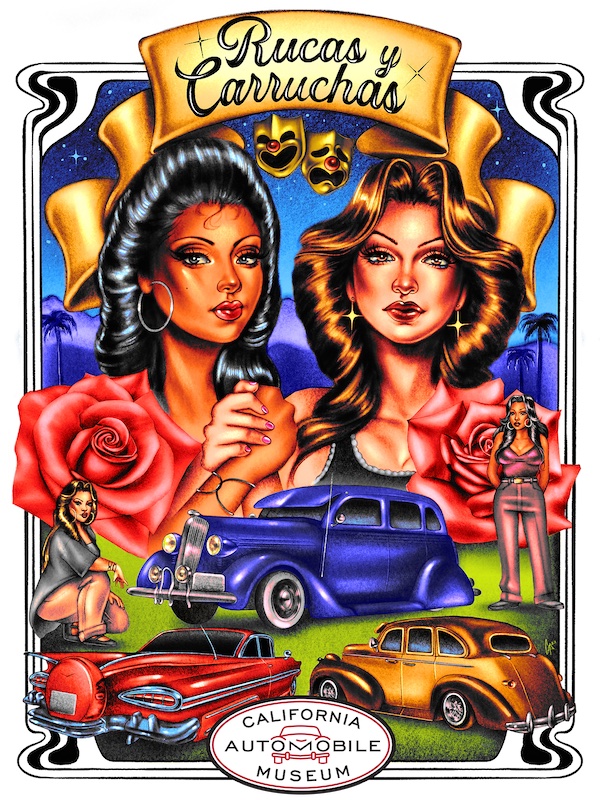
On a trip to the California Automobile Museum last spring, I chanced upon an exhibit focused on women in lowrider culture. “Rucas y Carruchas: Ladies in Lowriders” celebrated the contributions of women in the lowrider community. The collection of colorful, spectacular cars was accompanied by photographs, videos, artwork, as well as personal stories that spoke of family, community, friendship, heritage, and the meaning of lowriders to the women who own them. As someone interested in the connection between women and cars, the exhibit piqued my interest. Upon investigating the matter a little further, I came upon a number of online articles and reports focused on the rise in female lowrider clubs and communities in the Latino communities in the Southwest United States. What makes this news exceptional is that lowrider culture has long been the province of men, a practice handed down from fathers to sons, from one generation to another. While women have always been part of lowrider culture, it has been primarily in the role of passenger, girlfriend, or a scantily clothed photographic model. However, as I discovered, women have become increasingly involved in the culture as creators and drivers, forming their own clubs, and challenging the male dominated nature of the lowrider scene.
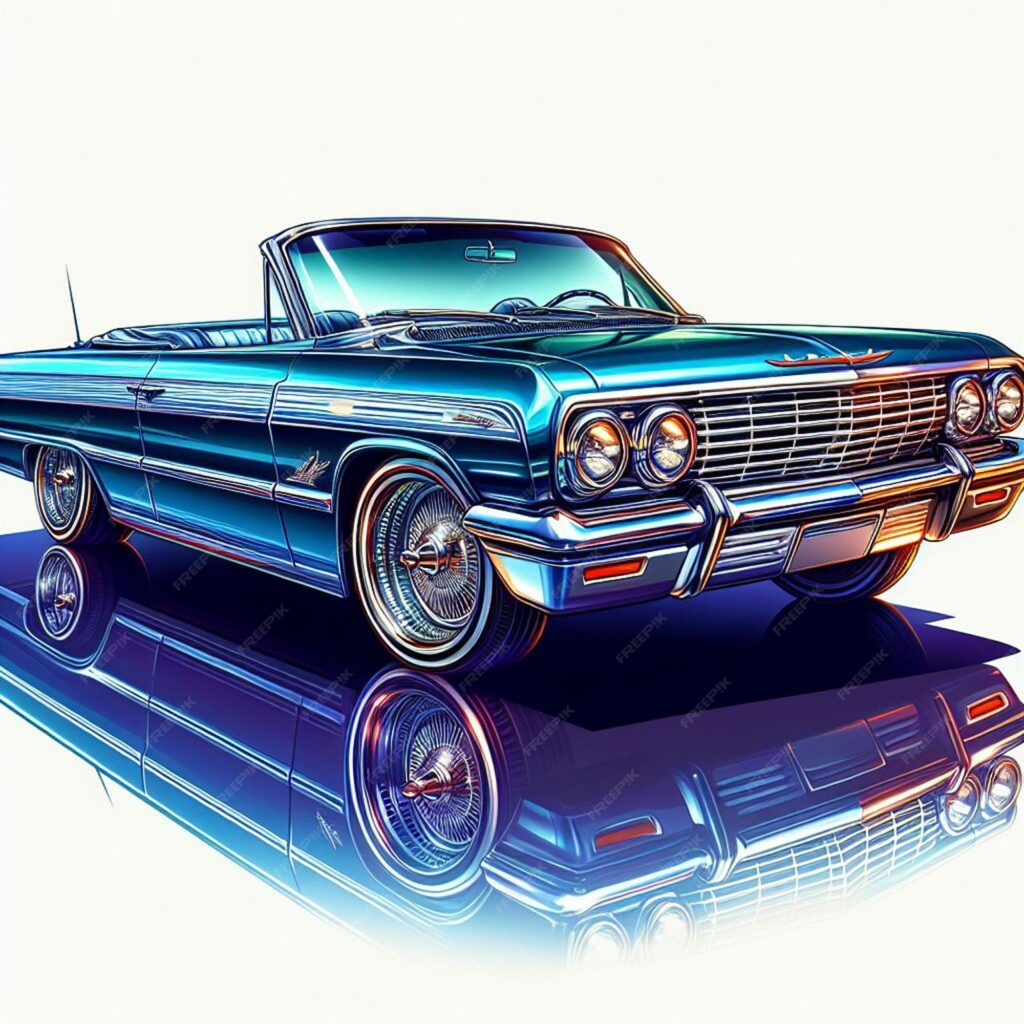
To the uninitiated, the lowrider is a customized domestic automobile – preferably a 1960s vintage Chevy Impala – painted in one of many spectacular and iridescent “candy” colors – bright pink, green, orange, deep purple, or red – highlighted with metal flake coatings, and finished with up to 18 layers of clear lacquer. The car bodies often serve as canvases for elaborative paintings of religious icons, cultural symbolism, the zoot suited pachuco, and shapely women. Lowrider interiors are often elegantly upholstered and intricately detailed in lush fabrics. However, while the lowrider is often recognized and admired for its aesthetics, the lowrider’s defining style is the lowered body that hovers mere inches from the pavement. This appearance is often achieved through the removal of rear shock absorbers and a pile of sandbags in the trunk; however, more sophisticated vehicles rely upon hydraulic technology to raise and lower the massive body frame. While the American hotrod of the white working-class male is most often associated with power and speed, bajito y suavecito – “low and slow” – epitomizes the lowriding culture. The lowrider is meant to be seen; consequently, as Brenda Bright writes in “Heart Like a Car,” owners of lowrider vehicles “drive these beautiful, luxurious roadway spectacles very slowly, literally taking over the road and forcing other drivers to ‘deal with’ their slow, deliberate driving style” (583).
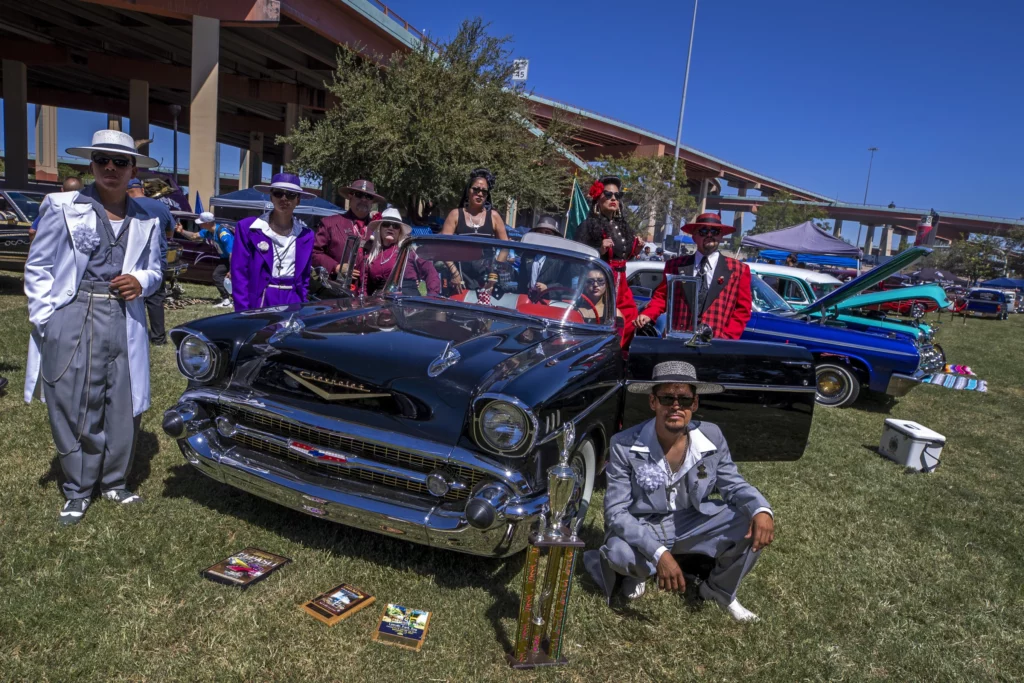
The lowrider subculture has a long and embedded genealogy in Mexican-American culture. It originated in the “car-saturated prosperity” of post World War II America and has remained integral to Chicano cultural identity into the twenty-first century. While hot rods and drag racers were the white male working-class vehicles of choice, Mexican-Americans proceeded in the opposite direction and created the lowrider. Young Chicanos appropriated the domestic automobile – which symbolized American values of independence, freedom, and social mobility – and reinvented it for their own use.
Lowrider customization is a form of work in which the Chicano takes a great amount of pride. As Ben Chappell writes, “Lowriders join industrial objects with craft, endowing them with new significance. With reference to Mexican-American history, the investment of a car with symbolic value and manual labor (as well as folk mechanical engineering) with prestige is a posture of resistance to a ‘community identity’ that labels Mexican-Americans as cheap labor” (637). The Chicano community demonstrates its pride not only by cruising “low and slow,” but also through participation in regional car shows and “hopping” competitions. These events provide an opportunity for the Chicano lowrider to demonstrate creativity, artistic skill, as well as technological ability.
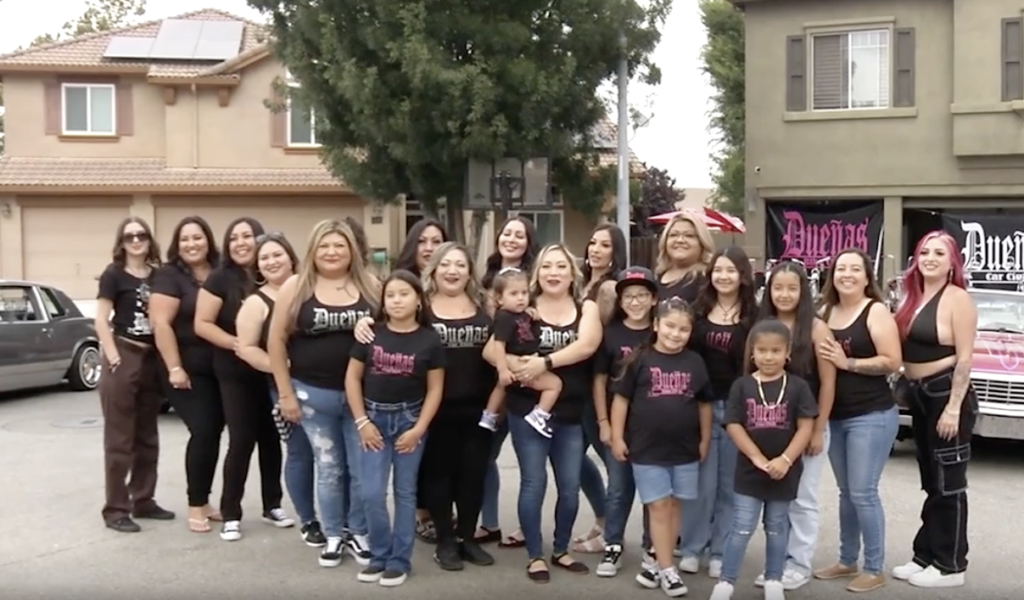
While some women remain participants in conventional lowrider culture, there are others who have broken away to establish new female and family focused lowrider communities. They have appropriated many of the culture’s longstanding traditions and practices while creating new spaces for like-minded female enthusiasts. These clubs and communities have become sites for creativity, invention, friendship, and family. Of the solidarity found in the lowrider community, one member declared, “you have all the pressures of going to work, coming home, but you know with the club sisters, we find time and manage to go out; they’re a very big support system for myself. We treat each other like family.”
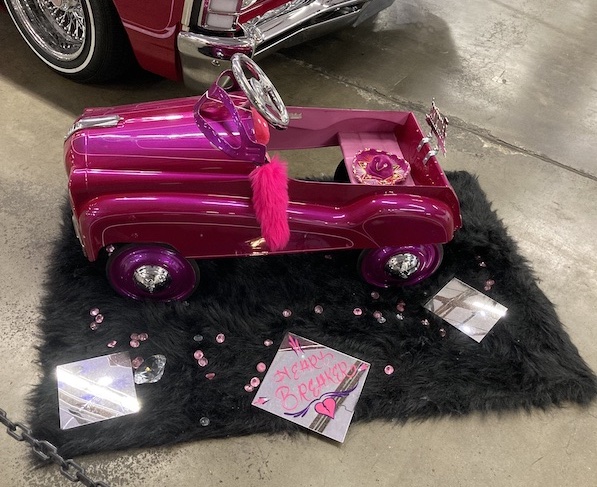
Whereas traditional lowrider culture was centered on the connection between fathers and sons, women have expanded the generational focus to promote not only their own participation, but most importantly, to encourage that of young girls. As a founding member of the Dueñas Club in California explained, “It’s really important that us mothers, us women, show support for our girls. It’s nice to be able to do things with your daughter that she’s also going to love. You know showing my daughter the ways, embracing the culture, the love, and just really being influenced.” Many of the girls begin their immersion into lowrider culture with bikes. As a young member remarked, “I’m involved because my mom, she’s part of the car club, and then over time, I started going with her to the car shows, bike shows, and I was thinking to myself I want one of those. You see your creation come to life, and everything that you’re planning, it just makes you feel really good.” When these young girls become adults, they often follow in their mother’s footsteps. Angel Romero, founder of the all-women’s car club Duenas, spoke of her mother’s influence. As she recalls, “Back then, we didn’t see a lot of women driving lowriders. People would joke that the lowrider was my boyfriend’s or Daddy’s ride. […] We got into this lifestyle and culture very differently from most people. It wasn’t our dad or a male role model who taught us about cars. It was our mom.”
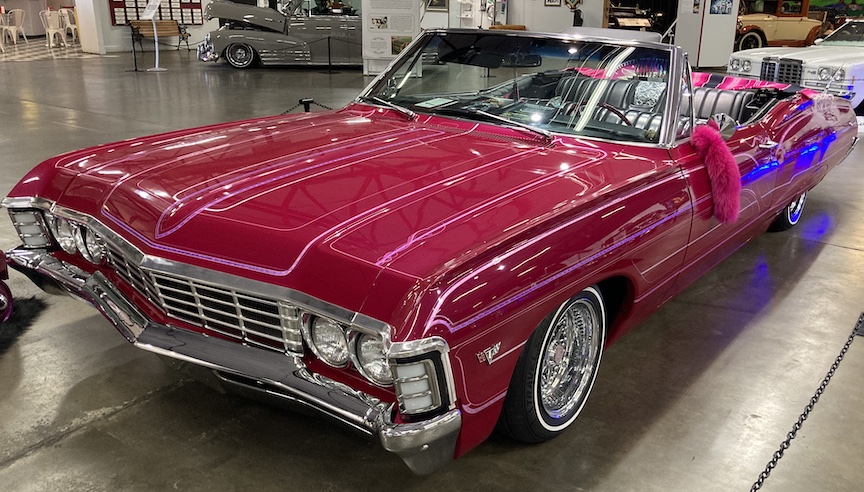
The women who participate in lowrider culture view their vehicles not only as spectacular machines, but also as canvases on which they can express their creativity, culture, and identity. In the “Rucas y Carruchas” exhibit, for example, the collection was accompanied by photographs, videos, artwork, and personal stories written in notebooks and scribbled on scraps of paper. Personal artifacts were often strategically placed around the cars, which offered a glimpse into the lives and dreams of the women who owned them. This practice begins in girlhood; in online club photographs, bikes are often surrounded by a young girl’s important possessions.

Women in lowrider culture are getting recognition in local and national news sources. Lowrider magazine, dubbed the movement’s “bible” by readers worldwide and is considered the source for the latest in everything lowrider, published a special edition in October 2024 dedicated to ‘women shaping the culture’ in honor of women’s history month. As noted in an article in Motor Trend, “Historically, depictions of women in Lowrider magazine were often limited to models on the hoods of cars. This limited-edition revival highlights the women behind the wheel who have fought for their place as drivers, builders, mechanics, painters, and welders in a male-dominated world.”
For generations, lowrider culture has evolved as an important site of collective and individual identity formation among Chicano fathers and sons in the southwestern United States. In the twenty-first century, women within these locations have embraced the historical, cultural, and creative components to construct new female-centered communities focused on friendship, family, and a shared passion for the iconic lowrider automobile.
Bright, Brenda. “Heart Like a Car: Hispano/Chicano Culture in Northern New Mexico.” American Ethnologist. 25.4 (1998): 583-609.
Chappell, Ben. “Lowrider Style: Cultural Politics and the Poetics of Scale” in Cultural Studies: An Anthology. Michael Ryan, ed. Malden MA: Blackwell, 2008.
Figueroa, Fernanda and Melissa Perez Winder. “Lowriding is More Than Just Cars: It’s About Family and Culture for Mexican-Americans. 15 Oct 2024. APnews.com 15 Oct 2024.
Good Morning America. “Meet the Moms and Daughters of this All-Female Lowrider Community.” 8 Feb 2024. Video.
Romero, Angel. “How an All-Women’s Lowrider Club Formed in the Heart of Silicon Valley.” 27 Sep 2024. kqed.org